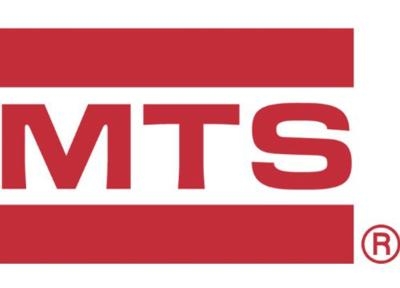Tue, Jul 22, 2014
Test System Used By Snecma In Evaluation Of LEAP Turbofans
MTS Systems Corporation ... a supplier of high-performance test systems and position sensors, recently delivered a state-of-the-art test system to French aircraft engine manufacturer Snecma (Safran). The test system is being used for highly complex testing and certification of fan blades made from advanced composite materials for the next-generation LEAP turbofan. The new engine is designed to deliver significantly cleaner, quieter and more fuel-efficient performance than current jet engine designs.

The LEAP engine was developed by CFM International, a joint company between Snecma (Safran) and General Electric. It is the successor engine for the CFM56 line and is slated to equip the Airbus A320neo and Boeing 737 MAX aircraft, among others.
The MTS test system is engineered to simulate the dynamic forces experienced by fan blades in a real-world jet engine operating environment. The system comprises a high-force servo-hydraulic load frame outfitted with a unique configuration of vertical and lateral actuators capable of accurately replicating the combination of forces.
According to Dr. Mike Jost, Senior Vice President and General Manager of MTS Test, developing the Snecma test system posed unique engineering challenges. "The test program requires that fan blade specimens be subjected to 1.4 million load cycles over the course of six months. Adding to this challenge, Snecma required that this high-frequency system also be adaptable to test blade sizes and geometries beyond those required by the first application program. To meet these aggressive test requirements, we engineered a custom test solution to provide precise control of complex forces and motions at high frequencies."
"The new LEAP jet engine promises to lower fuel consumption and emissions by 15 percent when compared to today's engines, saving fuel and reducing the impact on our environment," said Dr. Jeffrey Graves, President and Chief Executive Officer of MTS Systems Corporation. "Our close collaboration with Snecma in the development of this next-generation technology exemplifies the pivotal role MTS technology can play in meeting one of the key challenges of our time – building a cleaner, more fuel-efficient global transportation infrastructure."
More News
A Puff Of Smoke Came Out From The Top Of The Engine Cowling Followed By A Total Loss Of Engine Power On May 9, 2025, about 1020 mountain daylight time, an experimental amateur-buil>[...]
From 2022 (YouTube Edition): Jenny, I’ve Got Your Number... Among the magnificent antique aircraft on display at EAA’s AirVenture 2022 was a 1918 Curtiss Jenny painstak>[...]
Very High Frequency (VHF) The frequency band between 30 and 300 MHz. Portions of this band, 108 to 118 MHz, are used for certain NAVAIDs; 118 to 136 MHz are used for civil air/grou>[...]
“From approximately November 2021 through January 2022, Britton-Harr, acting on behalf of AeroVanti, entered into lease-purchase agreements for five Piaggio-manufactured airc>[...]
Microburst A small downburst with outbursts of damaging winds extending 2.5 miles or less. In spite of its small horizontal scale, an intense microburst could induce wind speeds as>[...]
 NTSB Prelim: Lee Aviation LLC JA30 SuperStol
NTSB Prelim: Lee Aviation LLC JA30 SuperStol Classic Aero-TV: Curtiss Jenny Build Wows AirVenture Crowds
Classic Aero-TV: Curtiss Jenny Build Wows AirVenture Crowds ANN's Daily Aero-Term (05.30.25): Very High Frequency (VHF)
ANN's Daily Aero-Term (05.30.25): Very High Frequency (VHF) Aero-News: Quote of the Day (05.30.25)
Aero-News: Quote of the Day (05.30.25) ANN's Daily Aero-Term (05.31.25): Microburst
ANN's Daily Aero-Term (05.31.25): Microburst



